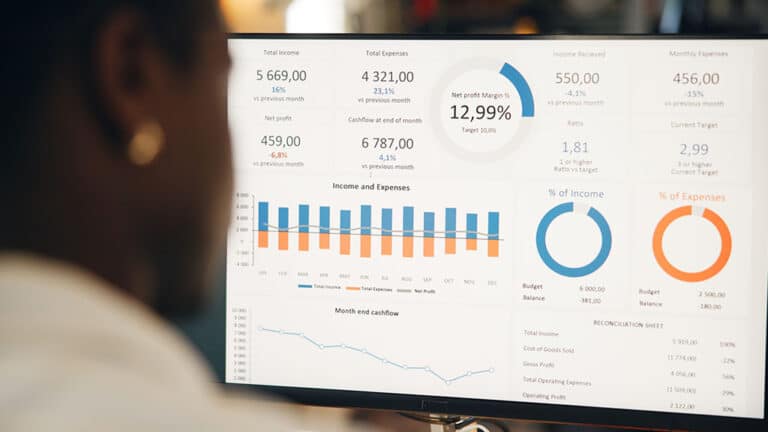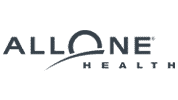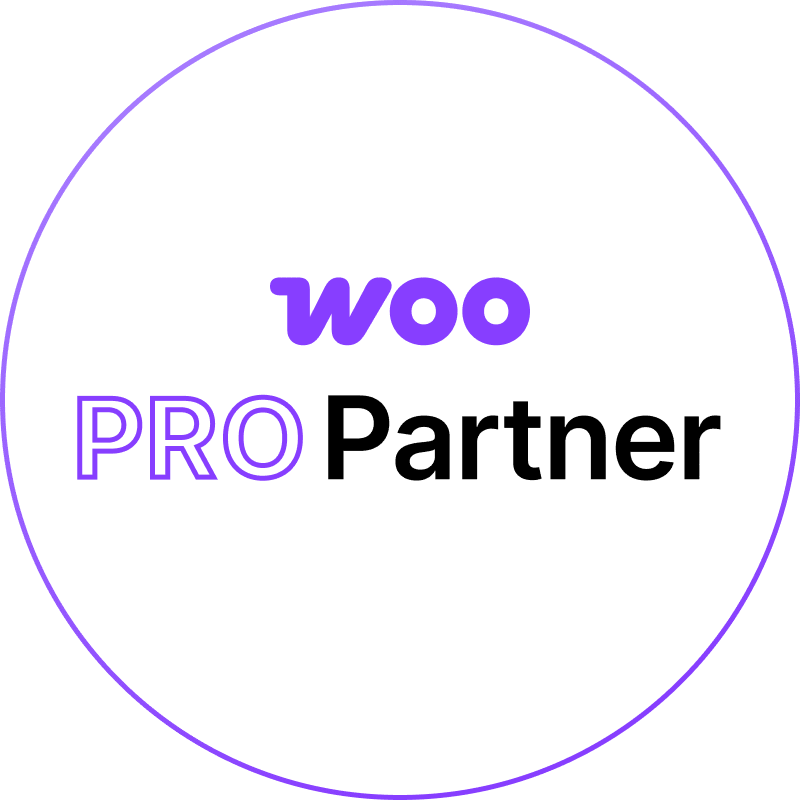How to Leverage Google’s Latest Algorithm Updates for Higher Rankings
Google’s algorithm updates are designed to improve the quality and relevance of search results by refining how websites are ranked. These updates, often driven by advancements in technology and changes in user behavior, focus on ensuring users receive the most accurate and helpful information. For businesses, staying informed about these updates is critical to maintaining or improving search rankings.
Algorithm updates can range from minor tweaks to significant overhauls that reshape the digital marketing landscape. For instance, updates like Google’s Core Web Vitals and the Helpful Content Update have emphasized user experience and content quality. These changes require businesses to adapt their SEO strategies to align with Google’s evolving standards. Ignoring these updates can result in decreased visibility, reduced traffic, and a loss of competitive edge.
For businesses looking to stay ahead, working with an SEO marketing agency can provide the expertise needed to navigate these updates effectively. Agencies can analyze how updates impact your site and recommend actionable changes to keep your rankings strong. Understanding the purpose behind these updates is the first step in leveraging them to your advantage.
Key Recent Algorithm Changes
Google’s most impactful recent algorithm updates have centered on improving user experience, content relevance, and technical performance. Understanding these changes can help businesses refine their SEO strategies to align with Google’s priorities.
The Helpful Content Update, for example, focuses on rewarding websites that provide valuable, user-centric content while penalizing those with thin or misleading information. This shift underscores the importance of creating in-depth, well-researched content that directly answers user queries. For instance, a blog post titled “Top 10 Ways to Improve Home Office Productivity” that offers actionable tips and links to credible sources is more likely to rank well than a generic article stuffed with keywords.
Another significant update is Google’s emphasis on Core Web Vitals, which measures a site’s loading performance, interactivity, and visual stability. Websites with fast load times, responsive design, and smooth navigation are more likely to rank higher. For example, an e-commerce site with optimized product pages and a seamless checkout process aligns with these metrics, resulting in improved rankings and user satisfaction.
Google’s growing reliance on AI and natural language processing has also influenced its algorithm. Updates like BERT and MUM enable the search engine to better understand context and user intent, making it crucial for businesses to optimize content for conversational queries and long-tail keywords.
By staying informed about these updates and adapting strategies accordingly, businesses can turn algorithm changes into opportunities for growth.
Evaluating Your Current SEO Strategy
To leverage Google’s latest algorithm updates effectively, businesses must first evaluate their current SEO strategy. This assessment provides a clear picture of what’s working, what’s not, and where improvements are needed to align with updated ranking factors.
Start by analyzing your website’s content. Does it meet Google’s emphasis on helpful, user-focused material? Audit existing pages to ensure they address user intent, provide actionable insights, and are free from fluff or keyword stuffing. For example, a page on “How to Start a Small Business” should offer step-by-step guidance rather than vague advice, with clear headings and easy navigation.
Next, assess your site’s technical performance. Tools like Google PageSpeed Insights and Lighthouse can help identify issues with Core Web Vitals, such as slow load times or poor visual stability. Addressing these problems by optimizing images, reducing server response times, or implementing lazy loading can significantly enhance your site’s performance.
Backlink quality is another critical factor. Use tools like SEMrush or Ahrefs to evaluate your backlink profile, focusing on the credibility and relevance of referring domains. High-quality backlinks from authoritative sites signal to Google that your website is trustworthy, while toxic links can harm your rankings.
Finally, consider how well your site adapts to mobile-first indexing. With the majority of searches conducted on mobile devices, ensuring your site is fully responsive and optimized for smaller screens is essential.
Regularly evaluating and refining your SEO strategy ensures your website remains competitive and aligned with Google’s latest updates.
Prioritizing Quality Content Creation
Quality content has always been at the heart of effective SEO, but with Google’s recent updates like the Helpful Content Update, it’s now more important than ever. This update emphasizes the need for user-first content, rewarding pages that provide valuable insights and penalizing those that prioritize search engines over readers. Businesses must shift their focus to creating comprehensive, engaging, and well-researched content that aligns with user intent.
To prioritize quality, start by understanding your audience’s needs. Conduct keyword research to identify the questions they’re asking and the problems they need solved. For example, if your target audience is small business owners, you might create a detailed guide on “How to Create a Social Media Strategy on a Budget.” Addressing their pain points with actionable advice establishes your site as a trustworthy resource.
Content depth is another crucial factor. Instead of producing short, surface-level posts, aim for in-depth articles that explore topics thoroughly. For instance, an article on “Sustainable Packaging Solutions for E-Commerce” could include case studies, industry statistics, and actionable tips, making it more valuable to readers and search engines.
Formatting also plays a role in content quality. Use headings, bullet points, and visuals to improve readability and engagement. Adding internal links to related pages not only enhances the user experience but also strengthens your site’s structure.
Finally, update older content regularly to ensure it remains accurate and relevant. For example, a blog post on “SEO Trends for 2020” should be refreshed with current data and insights to maintain its usefulness and ranking potential. By consistently producing high-quality content, businesses can align with Google’s priorities and achieve sustainable SEO success.
Optimizing for Core Web Vitals
Core Web Vitals are essential metrics that measure the performance of your website in terms of user experience. These include Largest Contentful Paint (LCP), First Input Delay (FID), and Cumulative Layout Shift (CLS). Google uses these metrics to evaluate how quickly and smoothly your site loads, interacts, and displays content. Websites that excel in Core Web Vitals are more likely to rank higher, as they provide a better experience for users.
Improving LCP focuses on speeding up the time it takes for the main content of a page to load. Strategies include optimizing images, leveraging browser caching, and using a content delivery network (CDN) to reduce server response times. For example, an e-commerce product page with optimized images will load faster, keeping users engaged and reducing bounce rates.
FID measures the time it takes for a page to become interactive. To improve FID, minimize JavaScript execution and ensure that critical resources are prioritized during page load. For instance, a blog page that loads interactive elements like forms or buttons quickly will create a smoother experience for users.
CLS evaluates the visual stability of a page, ensuring that elements don’t shift unexpectedly during loading. To address CLS issues, set size attributes for images and videos, and avoid using dynamic ads that change layout mid-load. This is particularly important for mobile users, where layout shifts can be especially frustrating.
Regularly testing your site’s Core Web Vitals with tools like Google PageSpeed Insights or Lighthouse can help identify areas for improvement. By optimizing for these metrics, businesses can enhance user experience and align with Google’s algorithm, ultimately boosting their rankings.
Embracing E-A-T (Expertise, Authority, Trustworthiness)
E-A-T (Expertise, Authority, and Trustworthiness) has become a cornerstone of Google’s algorithm, influencing how content is evaluated and ranked. Websites that demonstrate strong E-A-T signals are more likely to earn higher rankings, particularly in industries like healthcare, finance, and law, where accuracy and reliability are paramount.
Expertise refers to the qualifications and knowledge of the content creator. Businesses can enhance this by ensuring content is written or reviewed by subject matter experts. For example, a fitness blog could feature articles authored by certified trainers or nutritionists, complete with detailed author bios showcasing their credentials.
Authority is built through recognition and credibility within your industry. High-quality backlinks from reputable sites, mentions in industry publications, and active participation in professional communities all contribute to your site’s authority. For instance, a digital marketing agency featured in leading SEO blogs is more likely to rank well for competitive keywords.
Trustworthiness encompasses factors like website security, transparency, and accurate information. Implementing HTTPS, displaying clear contact information, and maintaining up-to-date content are essential for building trust with both users and search engines. Customer reviews and testimonials also play a significant role in reinforcing trustworthiness.
Aligning with E-A-T principles requires a holistic approach that combines high-quality content, technical optimization, and credibility-building activities. By focusing on E-A-T, businesses can not only meet Google’s standards but also foster user trust and loyalty.
Leveraging AI and Machine Learning in SEO
Artificial intelligence (AI) and machine learning have become integral to Google’s algorithms, transforming how search engines evaluate and rank content. Updates like BERT (Bidirectional Encoder Representations from Transformers) and MUM (Multitask Unified Model) demonstrate Google’s growing ability to understand context, semantics, and user intent. To stay competitive, businesses must adapt their SEO strategies to align with these AI-driven advancements.
BERT focuses on improving Google’s understanding of natural language, making it essential to optimize content for conversational queries. For example, instead of targeting fragmented keywords like “SEO tips 2025,” create content that addresses full questions like “What are the best SEO tips for 2025?” This approach ensures your content aligns with how users phrase their searches and how Google interprets them.
MUM takes AI a step further by enabling Google to understand and process multiple modes of information, including text, images, and videos, to answer complex queries. To leverage this, businesses should diversify their content formats. For instance, a travel company might create a blog post about “Top Destinations for Solo Travelers” supported by an infographic and a video guide. These elements not only enhance user experience but also improve your chances of ranking for multimodal searches.
AI tools can also help businesses refine their SEO strategies. Platforms like SEMrush and Ahrefs use machine learning to analyze keyword opportunities, monitor competitor performance, and identify content gaps. Leveraging these insights allows businesses to create data-driven strategies that align with Google’s AI-powered algorithms.
By embracing AI and machine learning, businesses can future-proof their SEO strategies and stay ahead in an increasingly competitive digital landscape.
Enhancing Mobile and Voice Search Optimization
With mobile-first indexing and the growing popularity of voice search, optimizing for these platforms is no longer optional—it’s essential. A significant percentage of searches now occur on mobile devices, and voice assistants like Alexa, Siri, and Google Assistant are becoming go-to tools for finding information. Businesses that adapt to these trends can capture a larger share of search traffic and improve their rankings.
Mobile optimization starts with responsive design, ensuring your website functions seamlessly across all screen sizes. Pages should load quickly, be easy to navigate, and feature touch-friendly elements like buttons and forms. For example, an online clothing store with a mobile-optimized site can provide a smooth browsing and checkout experience, increasing conversions and reducing bounce rates.
Voice search optimization requires a different approach. Voice queries are often longer and more conversational than text-based searches, making long-tail keywords and natural language essential. For instance, instead of targeting “best pizza NYC,” optimize for queries like “Where can I find the best pizza in New York City?” Additionally, ensure your content answers common questions directly, as voice assistants often pull responses from featured snippets.
Location-based optimization is also critical for voice search, as many queries include “near me” or specific locations. Ensure your Google Business Profile is complete and accurate, including business hours, phone number, and address. A local restaurant with an optimized profile is more likely to appear in voice search results for “restaurants near me” or “best Italian food nearby.”
By prioritizing mobile and voice search optimization, businesses can align with user behavior and secure a competitive edge in rankings.
Tracking and Adapting to Algorithm Changes
Google’s algorithm updates are constant, and businesses that fail to monitor and adapt to these changes risk losing visibility. Tracking performance metrics and making iterative improvements based on data insights is critical for staying competitive in the ever-evolving SEO landscape.
Start by using tools like Google Analytics and Search Console to monitor key metrics, including organic traffic, bounce rates, and average session duration. If you notice significant changes following an algorithm update, analyze which pages are most affected and adjust your strategy accordingly. For example, if a drop in traffic correlates with the Helpful Content Update, revisit your content to ensure it aligns with user intent and provides value.
Keyword tracking tools like SEMrush or Ahrefs can help you monitor how updates impact your rankings. If certain keywords experience a decline, consider refining the corresponding content, updating outdated information, or building backlinks to those pages. For instance, if your blog on “Email Marketing Tips” drops in rankings, adding new statistics or actionable advice can help it recover.
Staying informed about algorithm updates is also essential. Follow Google’s announcements, industry blogs, and forums to understand the intent behind updates and how they affect ranking factors. This knowledge allows you to proactively adapt your strategy instead of reacting to declines in performance.
By consistently tracking and adapting to algorithm changes, businesses can maintain strong rankings and capitalize on new opportunities for growth.
Future-Proofing Your SEO Strategy
The only constant in SEO is change. Preparing for the future requires a proactive, adaptable strategy that aligns with emerging trends and prioritizes long-term success. Businesses that invest in future-proofing their SEO efforts can weather algorithm updates and maintain strong performance over time.
Start by focusing on evergreen content. Unlike trendy topics that lose relevance quickly, evergreen content remains valuable over time. For example, a guide on “How to Optimize Your Website for SEO” will likely attract consistent traffic, even as specific strategies evolve. Regularly updating evergreen content ensures it remains accurate and competitive.
Diversifying content formats is another key strategy. As Google continues to integrate AI and multimedia capabilities into its algorithms, businesses that offer text, video, infographics, and interactive content will have a competitive edge. A tech company, for instance, could create a blog post supported by a video tutorial and a downloadable checklist, appealing to multiple audience preferences.
Building a strong technical foundation is equally important. Invest in site speed, mobile optimization, and secure HTTPS connections to meet Google’s performance standards. These elements not only improve rankings but also enhance user satisfaction and trust.
Finally, partner with an SEO marketing agency to stay ahead of the curve. Agencies have the expertise and resources to identify emerging trends, implement advanced strategies, and monitor performance, ensuring your site remains competitive.
By future-proofing your SEO strategy, businesses can navigate algorithm updates with confidence and achieve sustainable growth in an ever-changing digital landscape.

















